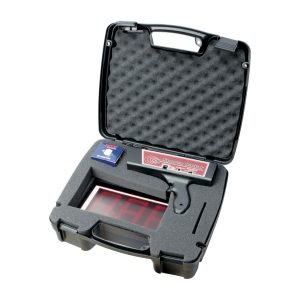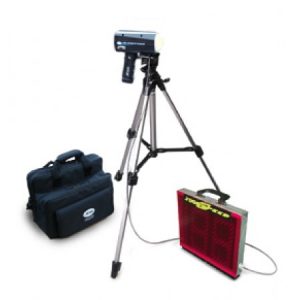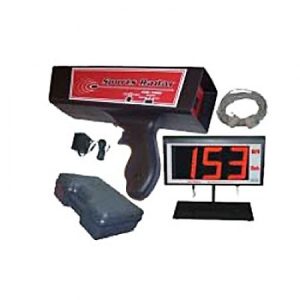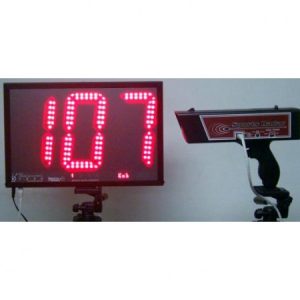
A 2023 survey conducted by Pew Research Center revealed that football is America’s sport. 53% of Americans see football as the top sport in the country, compared to baseball, which garnered only 27% of votes.
You will all agree to the fact that football is a game of speed, strategy, and precision. From quarterbacks hurling passes to wide receivers sprinting down the field, the velocity of players and the football itself is a critical element that can influence the outcome of a game.
In college and NFL football, radar guns are crucial in measuring speed, providing valuable data for coaches, scouts, and analysts. Let’s explore how radar guns are used in American football and the science behind their operation.
The Science Behind Radar Guns
Radar guns emit a radio wave that reflects off a moving object, such as a football or a player. The radar gun then measures the frequency shift between the emitted and reflected waves. This frequency shift, known as the Doppler shift, is directly proportional to the object’s speed.
Radar guns used in football are highly sophisticated. They come equipped with features like:
- Multi-target Tracking: The ability to track multiple objects simultaneously, such as the ball and several players, provides a richer dataset.
- High Accuracy: Advanced algorithms filter out noise and ensure precise speed measurements, even in a dynamic environment like a football field.
- Portability and Ease of Use: Modern radar guns are compact and user-friendly, allowing quick deployment and immediate data retrieval.
Measuring Speed in College Football
In college football, speed measurement serves multiple purposes, from evaluating player performance to developing game strategies. Here’s how radar guns are typically used:
Training and Performance Analysis: Coaches use radar guns during practice sessions to measure players’ speed, particularly quarterbacks, wide receivers, and running backs. This data helps assess player performance, identify strengths, and pinpoint areas for improvement.
Recruitment and Scouting: College scouts rely heavily on speed metrics when evaluating potential recruits. A quarterback’s throwing speed, or a receiver’s sprinting speed can significantly impact their draft status. Radar guns provide objective data that complements subjective assessments.
Game Day Application: While not as common as in training sessions, radar guns are occasionally used during games to measure the speed of plays. This information can be valuable for broadcasters and analysts, offering fans deeper insights into the game’s dynamics.
Radar Guns in the NFL
In the NFL, where the stakes are higher, the use of radar guns is even more sophisticated:
Enhanced Player Metrics: NFL teams invest in advanced radar gun technology to measure player performance. This includes not just the speed of the ball but also the velocity of player movements. High-speed cameras and radar systems work in tandem to provide comprehensive data.
Injury Prevention and Management: By monitoring the speed and impact forces on players, teams can better understand the risks of injury. For instance, measuring the speed of a linebacker’s tackle can help design safer play techniques and improve protective gear.
Tactical Analysis: Coaches and analysts use speed data to refine game strategies. Understanding how fast a receiver or a quarterback can sprint helps design plays that maximize team strengths and exploit opponent weaknesses.
Improve Your Game With Quality Radar Guns From Radar Sports, LLC
For college football coaches and NFL aspirants, precision and performance are paramount. Investing in top-quality radar guns that provide accurate and reliable data is essential to harness the power of speed metrics.
Radar Sports, LLC offers state-of-the-art radar guns designed specifically for the demands of football. Their advanced technology ensures precise measurements, enabling you to optimize training, enhance player performance, and gain a competitive edge.
Visit Radar Sports, LLC today and equip your team with the tools to excel.






